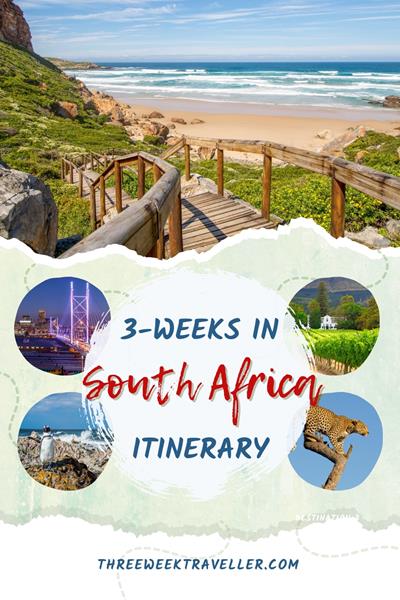South Africa is known for many reasons but most famously, as the home of Nelson Mandela. He was jailed for fighting against Apartheid and for democracy. Rich in culture and dark history, South Africa is also where you will find one of the world’s 3 best safaris – Kruger National Park.
Spending 3 weeks in South Africa, you will all learn more about the history of South Africa, see wild animals in their natural surroundings, see the spot where the Indian Ocean and the Atlantic Ocean meet, and many other attractions such as Table Mountain, Cape of Good Hope, and a chance to surf in one of the best surfing spots in South Africa.
ALSO READ: Safety travel tips and how to create your own itinerary
THINGS TO KNOW BEFORE GOING TO SOUTH AFRICA
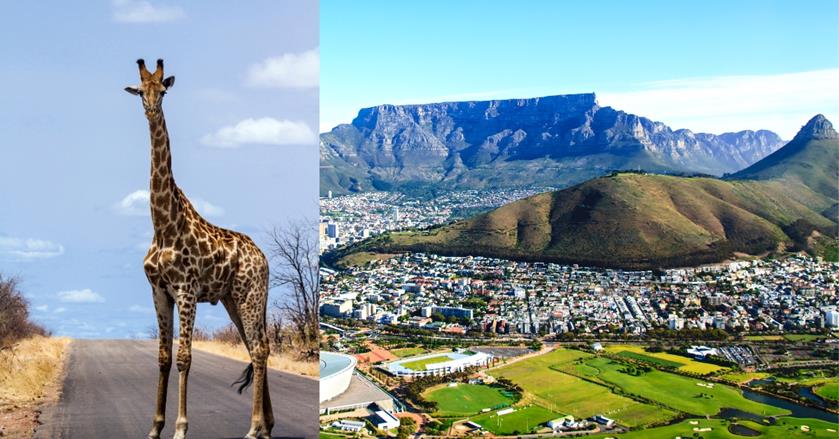
Before you book anything, there are a few, yet vital things that you should know. These information will help decide when to go, to rent a car or not, and how to prepare for the Kruger National Park safari.
Best time to go to South Africa
I went to South Africa at the end of October and stayed until the middle of November. I can personally say it was a great time to go, weather-wise. It’s the beginning of the summer and the spring just finished.
Remember that South Africa is in the southern hemisphere, making its season the other way around for travellers from Europe or North America.
Although all in all, the best time to go depends on what you want to do. Kruger Park was very dry during the time of my visit. The local tour guide on my Safari tour said that it didn’t rain during the springtime.
Climate change is definitely felt in this country and it affects not only the people but the animals whose home is South Africa.
For surfers, the best time to go for great waves is between September to November and then March until May. While visiting Kruger National Park, the best time to travel is between April and September.
The rainy season in most parts of the country is between November to March. While in Western Cape, it’s from May to August.
Are 3 weeks enough for South Africa
Yes, 20 days is a perfect amount of time for South Africa. Of course, you won’t be able to see everything. But you’l get to explore the must-visit attractions. You’ll cover 3-4 cities plus a wild safari at Kruger National Park.
However, it’s important to decide on how you plan to get around. Taking the bus or minivan is affordable, but very slow. That will eat up your time. A combination of renting a car to drive and flying will be ideal.
Rent a car or not
Renting a car can be a great thing to do during your 3 weeks in South Africa. I think it’s very helpful and convenient to have one when visiting Johannesburg, Kruger Park, Port Elizabeth, and Jeffreys Bay. For Capt Town, walking around, Uber, taxi, and hop-on-hop-off buses are good ways to get around.
So, check if your international driver’s license is valid here and if you are comfortable driving on the other side (left). Renting a car costs somewhere between $25 to $90 a day depending on the size and type. I rented an SUV since we were 4 people and all our luggage. You should definitely get insurance for your rental car.
Getting around
In South Africa, flying is a time-saver for long distances, with carriers like Kulula and Mango connecting major cities. For overland journeys, consider using luxury bus services like Greyhound or Intercape.
Within cities, ride-hailing apps such as Uber and Bolt are prevalent and convenient. Make sure to download it before you arrive or at the airport and set it up with a card payment.
For flexibility and exploration, renting a car is ideal, especially for destinations like the Garden Route or Kruger National Park. You should be able to pick up your rental car at the airport or downtown. Do remember, South Africans drive on the left-hand side and it’s wise to be cautious due to variable road conditions and traffic rules.
But one of the most popular ways to travel around is to take a shared minivan or minibus. They are not the most comfortable but it’s what most locals use to go around the big country of South Africa. It’s not easy to use, but the locals and your hotel receptionist should be able to help you find out where to board the minivans.
Language
South Africa has 11 official languages and English is one of them. Personally, my trip to South Africa was amazing since I could speak to the locals, hear their stories and have a drink. Many South Africans are very helpful and easy to communicate with, if you find yourself lost, you can easily ask for a direction or some travel tips from the locals.
Safety
Safety can vary from one person to another. I’ve met many people from South Africa who left their home country because they didn’t feel safe there. During my visit, I felt somehow safe in Jeffrey’s Bay. But in Johannesburg and Cape Town, I felt like I had to be more vigilant.
I keep my bag in front of me, don’t go out too late at night, and keep my car locked inside when driving. Travel with someone if that’s possible. Here are some more tips:
- Look on both sides when crossing the road – in South Africa, they drive on the left side, while many people follow the traffic lights, many don’t, especially in the big cities
- Don’t go out too late if you don’t feel safe or by yourself
- Share your real-time location with your family and friends
- Get mobile data on your phone
- Take a copy of your hotel’s business card in case you don’t know how to go back
Dos and Don’ts
South Africa is composed of many ethnic groups with different languages and different cultures. Here are the things you should remember before going to South Africa and while you are travelling here.
Dos
- do your research when it comes to animal tourism, and only participate in ethical tours that evolve animals
- food served in restaurants in South Africa are often in massive serving size, if you can’t finish it, have it as a take-out and give it to the people on the street asking for money, if the first person didn’t accept, keep trying
- dress properly in sacred places like praying rooms or buildings
- take photos of the beautiful and progressive parts of South Africa instead – it’s time to showcase the real beauty of this country instead of what the media normally show
Don’ts
- never take photos of Black kids and post them on social media – these kids don’t have the power to consent for themselves, regardless if you asked their parents or not
- don’t take photos of the slums and the people in them and upload them online – these actions are very frowned upon as they damage the self-esteem of those people
- don’t hand out money to the beggars – instead, buy them bread, a drink or a meal
- don’t buy illegal animal products such as horn, ivory, skin, etc
- arrive no later than 4-5 PM (Kruger Park)
- don’t get out of your vehicle, except in designated areas (picnic areas, viewpoints, accommodations) (Kruger Park)
- don’t tag your location when posting online, or post it a month later, poachers are now using social media to find animals to kill (Kruger Park)
- book your accommodation in advance for Kruger Park
Wine and dine
Personally, I think South Africa has a really good wine and is very affordable too. So, during your visit, don’t forget to try some local wine and traditional South African food. During my safari trip, I ate so much biltong, a local version of jerky. I also brought wine and biltong back with me.
Visa
South Africa offers visa-free entry to citizens of many countries, including most European Union countries, Brazil, Argentina, Canada, and Australia, for stays of up to 90 days. Citizens of the United States are granted a visa-free stay of up to 90 days.
However, travellers from countries such as China, India, and many others are required to obtain a visa in advance from a South African embassy or consulate. Please note that visa policies can change, so it’s important to check the most current information before making travel plans.
Average cost for 3 weeks in South Africa
South Africa did surprise me in terms of cost. Although I was already expecting it to be pricier than Southeast Asia, I wasn’t expecting it to be as expensive as other European destinations. This is my first African country, so, I don’t have anywhere else to compare the average travel cost.
To give you some ideas:
- On a budget: $60-$80/day (dorm bed, public transportation, street food/ready-to-eat food from grocery stores)
- On the mid-range: $80-$110/day (private room, taxis, mid-range restaurant)
- On the luxury: $150-up/day
These are for one person, you might be able to save money if you’re 2 people and sharing a room. This budget doesn’t include your flights to get to South Africa and back home and travel insurance.
Currency and mode of payment
ZAR is the currency used in South Africa, even though cash is still the king, hotels, restaurants, tour operators, and grocery stores accept international bank card payments.
Other basic travel tips
I always use travel sites and tools when planning my itinerary. I try to be prepared for important items such as getting a proper visa or documents, booking the first 1-2 nights, arranging a car to rent, and available travel insurance. Below is a list of the travel sites I always use to ensure I have fun and little to zero hassle:
PINNED MAP OF MUST-SEE PLACES IN SOUTH AFRICA
Click the expand icon on the top right to have a larger view of the map. Credit: Map data: Google
3 WEEKS IN SOUTH AFRICA ITINERARY
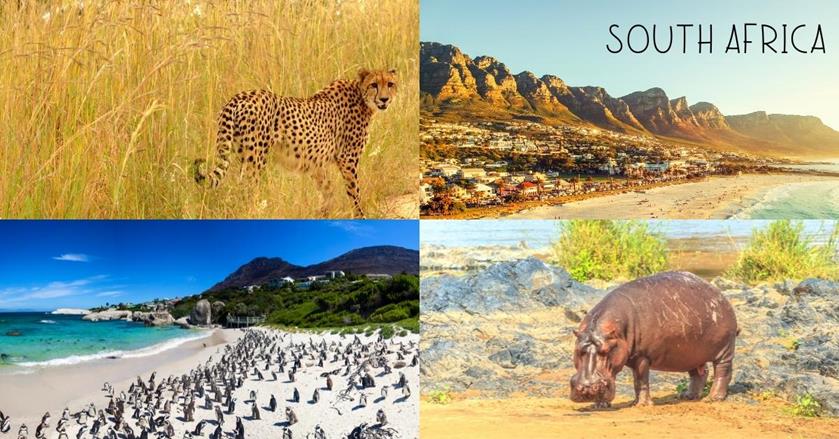
Depending on your preference, you can flip this itinerary if you prefer to start in a different city. I will start in Johannesburg because I like the idea of finishing the 3 weeks in South Africa on the beach. In this way, I can relax in the end, enjoy some spas, some sun, and probably some surfing too.
However, remember, there’s no right or wrong way to travel around. Do what makes sense for you and what would fit the type of person you are.
RELATED POST: 3 weeks in Tanzania where you can also go on a Safari and even hike the highest peak in Africa or this free 3 weeks in Kenya itinerary
Day-to-day overview:
- Day 1: Arrive in Johannesburg and pick up your rental car, settle down and catch up with sleep
- Day 2: Sightseeing around Johannesburg
- Day 3: Drive to Kruger National Park
- Day 4-6: Go spots animals around Skukuza rest camp
- Day 7: Move to Satara rest camp and go look for animals
- Day 10: Drive to the airport, return your car, and fly to Port Elizabeth
- Day 11-12: Explore Port Elizabeth, you can also rent another car here
- Day 13-15: Drive to Jeffrey’s Bay and spend 2-3 days
- Day 16: Fly to Cape Town, pick up another car in Cape Town or not
- Day 17: Do a Cape Town city tour
- Day 18: Go to Cape of Good Hope, Cape Point, and Boulders Penguin Colony
- Day 19: Hike or take the cable car to Table Mountain, do a tour to Robben Island (where Mandela was imprisoned)
- Day 20-21: Enjoy the beach, food, go souvenir shopping, and get ready to leave South Africa
Week 1: Johannesburg > Kruger Park
Arrive in Johannerburg. From the airport here (O.R Tambo International Airport), you can pick up your car rental or get one. If not, Uber is popular here and you can get picked up right by the exit, which is next to the parking lot. The airport is about a 30-minute drive from the city. If you decide to rent a car later, you should be able to do it in the city centre.
Kruger Park must-know
- there are almost 40 campsites, lodges, and hides where you can choose different types of accommodations
- there are accommodations like bungalows, hides, bush lodges, campsites, and even luxury lodges
- for the sake of painting a picture in this itinerary, I will talk about 2 popular main rest camps called Skukuza and Satara
- book your accommodation in advance especially if you want to stay inside the park
- I recommend staying at least 3 days and up to 6 days, I personally enjoyed my 6 full days
- there is a fee to enter the park that is not included in your accommodation cost ($25 adult, $12.50 child per day)
- when you arrive at the park, show your accommodation booking, and the staff will calculate how much your conservation fee/park fee
- bring long trousers, sun hats, in plain hunting colour (brown, green)
- if you plan to self-drive in Kruger Park, get yourself a rental car in Johannesburg
- if you don’t want to drive on your own, book your guided tours in advance since they get booked up quite fast
- read our things to know before visiting Kruger National Park article
Day 1: Prepare for your trip
We are starting out 3 weeks in South Africa itinerary by preparing in Johannesburg. On your first day, you can catch up with sleep, get yourself a local sim card with mobile data, get some cash, and plan the places you want to see during your stay in the city.
The attractions I recommend are Gandhi Square, Standard Bank Gallery, Apartheid Museum, Mandela’s House, Nelson Mandela Square, Hector Pieterson Memorial, Walter Sisulu Square, The Wilds Nature Reserve and Soweto Towers. Don’t forget to visit Soweto Brewing Company for a nice, fresh local beer.
For affordable accommodation, I stayed at Curiocity Hostel, they have private rooms too. For a bit nicer hotel, Signature Lux Hotel which I also stayed at.
Day 2: Johannesburg exploration
Explore the beautiful city of Johannesburg. I highly recommend you walk around and really observe this city. When you get to Cape Town, you will realise how different these two cities are in many ways. Johannesburg is pretty big, if you don’t have a car, you can use Uber to get around and reach different attractions.
The best way to visit all the attractions is either through a Johannesburg City guided tour or get yourself a hop-on-hop-off ticket for 1 or 2 days.
If you are not driving to Kruger Park, you can catch a flight from O.R Tambo to Nelspruit. From there, you can get a rental car to bring to the park or have other arrangements.
Day 3: Head to Kruger National Park
Kruger Park is about a 6-hour drive. The road is quite good but there are areas with trucks and speeding vans, there are plenty of stopovers you can do along the way. Get more cash before you enter Kruger Park. Although you can open a tab here and pay with a card, it’s better to be ready.
If you plan to bring some fresh food like some meat to grill, bread, and snacks, there’s a small town near Kruger Park called Mbombela and they have a medium-sized supermarket.
Assuming you already paid for your accommodation, you will have to pay for the “permit/entrance fee” to the park. You will want to arrive at the park no later than 17.00 (5 pm) because the park or the roads inside the park is on curfew from 18.00 (6 pm).
There are sunset or night safaris which can only be done through guided tours arranged by the Park staff. If you want to join these, book yourself as soon as you get to the park to secure a spot. You can also book full-day private tours.
You should visit the gift shop or mini grocery store inside the park and pick up a good-sized map. Then head to the main reception area where you will find a wall map marked with the day’s sightings of the animals. Mark your map which will help you plan your route for the next day.
Day 4-6: Spot beautiful animals around Skukuza
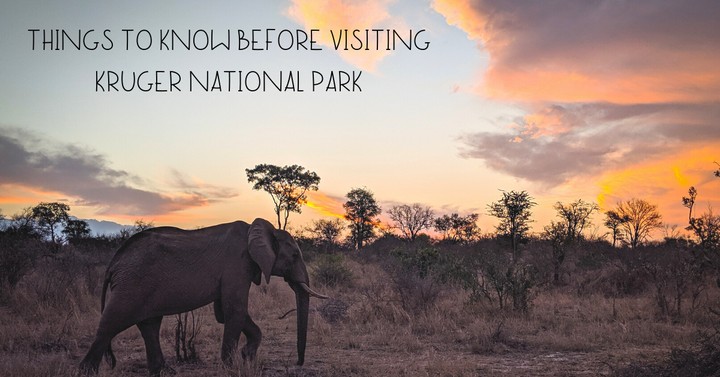
Skukuza is on the southern part of the park near the entrance called Phabeni Gate Kruger National Park. Skukuza have such nice bungalows, the kitchen has a complete basic kitchen tool, flatware, and even a fridge. There is a grilling spot right in front of my bungalow and a shared kitchen for cooking with gas.
Leave the camp no later than 9.00 and have an early start. At noon, the sun gets too hot forcing the animals to hide away. Make sure to pack some lunch with you. On the map, you can see picnic spots where you can grill some food. Each main rest camp has a restaurant where you can either order food to bring or visit the grocery store.
The animals move quite often, especially elephants and giraffes but the big cats usually stay in their spot as they are territorial. In this area of Skukuza, you will see loads of elephants, giraffes, impalas, kudus, waterbucks, and bushbucks. You might get lucky and spot lions, wildebeest, and even zebras. I highly recommend you stay at least 2 nights to have plenty of chances.
Day 7-9: Move to Satara
After your Skukuza stay is over, it’s time to move to Satara. Satara is north of Skukuza and pretty much the centre of Kruger Park. I already planned to move here after 2 nights in Skukuza, I assumed in case I don’t see the other animals, it just makes sense to try another spot.
Satara is obviously more popular than Skukuza. There are more visitors here as you can see the rooms and kitchen items are a bit rundown than in Skukuza. Regardless, it was still comfortable.
I got lucky here and saw a leopard, hippotamus, and rhinoceros. There are also a lot of hides here to simply just chill out and wait. I even visited another camp called Olifants Rest Camp. That place looks new and quite empty but still has all the amenities.
Day 10: Leaving Kruger National Park
It’s time to leave Kruger Park and head back to O.R Tambo International Airport to drop off the car. From here, you will take a domestic flight to Port Elizabeth. The flight takes less than 2 hours and costs between $50 to $70.
You can also check when you book your rental car if you can drop it off at the airport near Kruger Park and catch the flight from there. But check first if the airport has a flight to Port Elizabeth. If not, you have to drive back to Johannesburg.
Week 2: Port Elizabeth and Jeffreys Bay
Our 3 weeks in South Africa will now take us to Port Elizabeth. A coastal city highly associated with Nelson Mandela. Here, you can find the Nelson Mandela Stadium and can purchase Nelson Mandela Bay Pass (NMB), which will let you visit many attractions. By doing this, you can save some money and skip queue lines at the entrance.
I recommend you rent a car here again, but if not possible, taxis and Uber are always available. Just remember, if you go to Jeffreys Bay, you will need to drive back to Port Elizabeth to catch a flight.
Day 10-12: Port Elizabeth
If you haven’t had enough safari tours, you can visit Kragga Kamma Game Park and Addo Elephant National Park. On the other hand, if you want to get your heart pumping, you can visit Africa’s longest double zip line at Adrenaline Addo Adventure Park. During your visit, don’t forget to enjoy the beach such as Hobie Beach and King’s Beach. You can also join a boat cruise with whale and dolphin watching.
The Summerstrand has a popular Boardwalk with casinos, restaurants, and of course the beach. I sat here for lunch and spotted wild dolphins putting on a show for everyone to see! End up your walk by visiting the Cape Recife Lighthouse which is just over 150 years old.
Don’t forget to visit Route 67, the hub for historical street art and heritage trail dedicated to Nelson Mandela leading South Africa’s first democratic election. Most of the arts here are devoted to Nelson Mandela and also show how British and African history came together.
For some history lovers, visit the South End Museum which showcases how this community was destroyed as a result of Apartheid. While Algoasaurus at Bayworld displays the bones of the Brontosaurus which were discovered near Despatch 1903.
Last but not the least, explore Stanley Street, where you will find the best bars, pubs, cafes, and restaurants. If you like breweries, don’t skip Bridge Street Brewery. Don’t miss your chance to enjoy sandboarding and a boat trip.
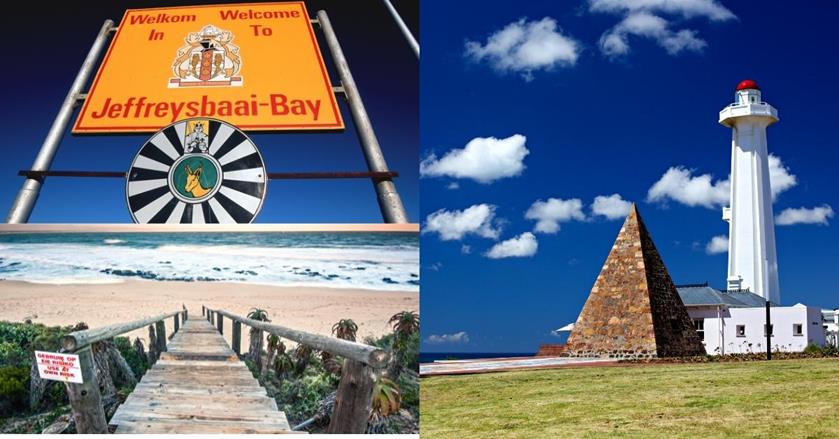
Day 13-15: Jeffrey’s Bay
For surf lovers out there, here’s your time to get challenged by one of South Africa’s best surfing spots. Jeffreys Bay or JBay’s water temperature can be coldish all year round. You can rent surfboards, suits, and other tools you will need. Some parts can be rocky but there are plenty of surfing schools here and they will be happy to give you tips on where to go.
To get here, it’s best to either rent a car or get an Uber or book a private car service. It’s about an hour’s drive, so get comfortable and enjoy the drive.
It’s a pretty small town, but if you head to Jeffreys Bay Main Beach, behind it is where most tourists go. Packed with restaurants, shops, and even a Shell Museum. If you travelling with young children, visit Dolphin Beach Entertainment, which is an amusement water park with lots of activities.
Day 16: Catch a flight back to Cape Town
You will have t drive back to Port Elizabeth and catch a flight there. The flight is about 1.5 hours and costs $60-$70.
Week 3: Cape Town
Finally, we are on the third week of our 3 weeks in South Africa itinerary. Cape Town, one of the capitals of South Africa offers so many attractions and things to do during your visit. In 4 days in Cape Town, we will be able to cover them all, so don’t worry. The good news is, in this city, I don’t recommend getting a rental car.
First, there are many amazing guided tours already and second, many places are not far from each other. There’s also a hop-on-hop-off bus ticket that you can purchase. Cape Town is one of those cities where hiking trails are just right in the backyard. If that’s something you like, take a look at this list of fun hiking trails in Cape Town.
Day 17: Cape Town city tour
Spend your first day exploring the city itself. There’s a very popular free walking tour. The guides make money through tipping, so don’t forget this at the end of the tour. That will cover your morning. In the afternoon, visit the District Six Museum for a heritage and history tour and the Castle of Good Hope for a nice walk around the 17th-century colonial castle. They are both within walking distance from downtown.
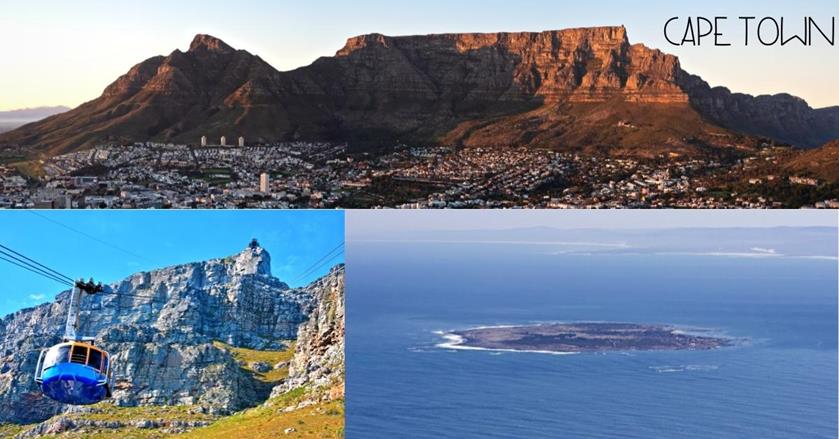
Day 18: Cape of Good Hope, Cape Point, and Boulders Penguin Colony
The best way to enjoy these popular destinations in Cape Town is by booking a guided tour. In the guided tour, your transportation, entrance tickets, and helpful tour guide are all included. It will take an entire day, so pack some lunch (or you can get some during the visit to Cape Point but it can be busy, taking into account limited time).
If seeing the African penguins is really high on your list, you can easily do a day trip to Boulder Beach Penguin Colony. It’s not that far from Cape Town and most tours will include transportation and a tour guide.
Day 19: Table Mountain and Robben Island
Now, you can hike up and down to the top of Table Mountain but it will take your entire day. You can also hike up and take the cable car down or take the cable car up and hike down or take the cable car up and down. Remember, the cable car might not be available all the time especially during the rainy season due to weather concerns.
If you are coming during the peak season December-February, the tickets get sold fast, make sure to book them early. You can also simply get on a taxi and head to the Table Mountain Cable Way then get your ticket. Even if you buy the ticket online, you will still need to stand in a queue to take the cable. The ticket is valid for 7 days, in case of closure, don’t worry.
It gets very windy and cold at the top, so make sure to bring a jacket and hold on to the railings. If you decide to spend your entire day hiking Table Mountain, you can visit Robben Island the next day.
Robben Island is about 7 kilometres (4 miles) from Cape Town. It is famous for being the prison where Nelson Mandela spent 18 years behind bars for his 27-year sentence. It also houses prisoners from other African countries like Namibia. There’s a popular viewpoint here that overlooks Table Mountain. There are tours at 9.00, 11.00, 13.00, and 15.00, the ticket costs about $25 and $13 for those under 18 years old. You can also book a tour that included hotel pick-up, ferry tickets, and a tour of the island.
Day 20-21: Relax and enjoy the rest of your trip
Enjoy the rest of your trip by visiting local restaurants, and a sunset dinner by the beach. Den Anker is a famous Belgian restaurant by the port but if that feels too busy, Rockpool Cape Town is also a great spot and The Bungalow for an intimate and fancier place.
Sea Point Pavilion Swimming Pool is the spot to spend your afternoon reading or simply on the beach around it. There is a public restroom near Queen’s Beach.
If you want more outdoor things to do Signal Hill is a great inland spot to view Table Mountain and Cape Town city.
THINGS TO SEE AND DO IN SOUTH AFRICA ITINERARIES
Kruger National Park
- Classic safari tours (self-drive or book a guided tour) – you a book a full-day tour
- Sunset hike (guided tour)
- Sunrise hike (guided tour)
- Overnight wild camping
Port Elizabeth
- Donkin Reserve – Pyramid and Lighthouse
- Addo Elephant National Park – get on a full-day safari
- Bayworld
- Route 67 – you can also book a Port Elizabeth walking tour
- South End Museum
- Sardinia Bay Beach
- Enjoy a river cruise
- South African Air Force Museum
- Alexandria Dune – you can do some sandboarding here
- Nelson Mandela Metropolitan Art
- Join a whale, dolphin, and penguin boat cruise – check the price
Johannesburg
- Hector Pieterson Memorial
- Apartheid Museum
- Constitution Hill Human Right Precinct
- Mandela’s House – join a Soweto Town tour that includes a visit to Mandela’s House
- Vilakazi Street – a popular spot for marketplaces, artisan products, etc
- Cradle of Humankind – join a tour
- Pilanesberg Nature Reserve – if you are skipping Kruger National Park, you can do a full-day safari tour here
Cape Town
- Cape of Good Hope/Cape Point and Penguin Colony – book a package tour
- Muizenberg Beach
- Table Mountain – book a cable car tour or a hiking tour
- Signal Hill
- Robben Island – get a township and ferry ticket combo
- Camps Bay Beach
- V&A waterfront – don’t miss a romantic champagne cruise
- Kirstenbosch National Botanic Garden
- Franschhoek Wine Tram – check the tour price
- Iziko Bo-Kaap Museum
- Try a tandem paragliding
- Bring your kids to Oceans Aquariums – get a skip-the-line ticket
- Zeitz Museum of Contemporary Art
- Wine tasting tour
- District Six Museum
- Experience seal snorkelling
ACCOMMODATIONS
Kruger National Park
- Skukuza
- Satara
- Olifants
- Mopani
Jeffrey’s Bay
- Affordable hotels: FlipFlops and TreeTops or Greystone Guesthouse
- Mid-range hotels: Supertubes Guesthouse or AtSupers Accommodation
- Luxury hotels: Intle Boutique Hotel or On The Beach Guesthouse
Port Elizabeth
- Affordable hotels: The Monument Guesthouse or Luxury Backpackers
- Mid-range hotels: Whispering Palms or The Beachwalk Bed and Breakfast
- Luxury hotels: The Beach Hotels or Nova Boutique Hotel and Spa
Johannesburg
- Affordable hotels: Lekerslaaplodge or Charlie’s Spot
- Mid-range hotels: Hotel Sky, Sandton or Signature Lux, Sandton
- Luxury hotels: The Houghton Hotel, Spa, Wellness, and Golf or The Franklin Loft Apartments
Cape Town
- Affordable hotels: Atlantic Point Backpackers or A Sunflower Stop Backpackers
- Mid-range hotels: Hotel Sky or Urban Oasis and Spa
- Luxury hotels: The Table Bay Hotel or POD Camps Bay
FINAL TIPS AND THOUGHTS
As I mentioned before, if you prefer to start in Cape Town, simply flip this itinerary and change up the dates. Both Cape Town and Johannesburg have international flights from Europe, Noth America, South America, and even Asia.
Even though South Africa is in a politically unstable situation at the moment and is considered unsafe at the moment, it’s still a very beautiful country to visit. The places to see, animals to spot, and history to learn are so diverse just like the locals. They are definitely one of the easy-going, always-in-happy mood people, I’ve met. They also have the best wine for such affordable prices.
I hope that you found this 3 weeks in South Africa itinerary and that I provided useful information. I had such a great time during my trip and honestly hope I can visit again in the future. It’s probably one of the best places, the beautiful natural attractions are like nothing else in the world.
SAVE THIS TRAVEL ITINERARY ON YOUR PINTEREST:
